In 2021, Kunal Ghosh Dastider had explained the work done by RISE on Loki. He then joined the DNEG team to work on Sonic the Hedgehog 2.
How did you and DNEG get involved on this show?
We actually got involved pretty late in the game. DNEG Producer Blair Brownlee and myself joined the show in and around October 2021 to create movie magic for 2 key environments in 4 sequences for Sonic the Hedgehog 2.
How did you feel becoming part of the Sonic universe?
It brought back a lot of good memories growing up playing Sonic on a Sega Genesis back in the day. Some long nights when I had the energy as a kiddo and I could escape the real world! Being able to be a part of bringing it to the big screen feels fantastic!
How was the collaboration with Director Jeff Fowler and Production VFX Supervisor Ged
Wright?
Jeff and Ged are both awesome about everything, we couldn’t have wished for better collaboration. Jeff brought so much fun into the work and shared his passion for the Sonic sequel, and really let us see through his eyes the vision he had for the movie. Ged also helped us translate that into what the VFX needed to be.
What were their expectations and approach about the visual effects?
As much as we needed to create worlds that have never been seen by the human eye, we always tried to keep it grounded so it made sense in terms of realism and physics. Since we had to creatively try a few things out to make it work, we first created quick concepts and layouts to evaluate the approach. It was a healthy collaboration to push creativity to the next level.
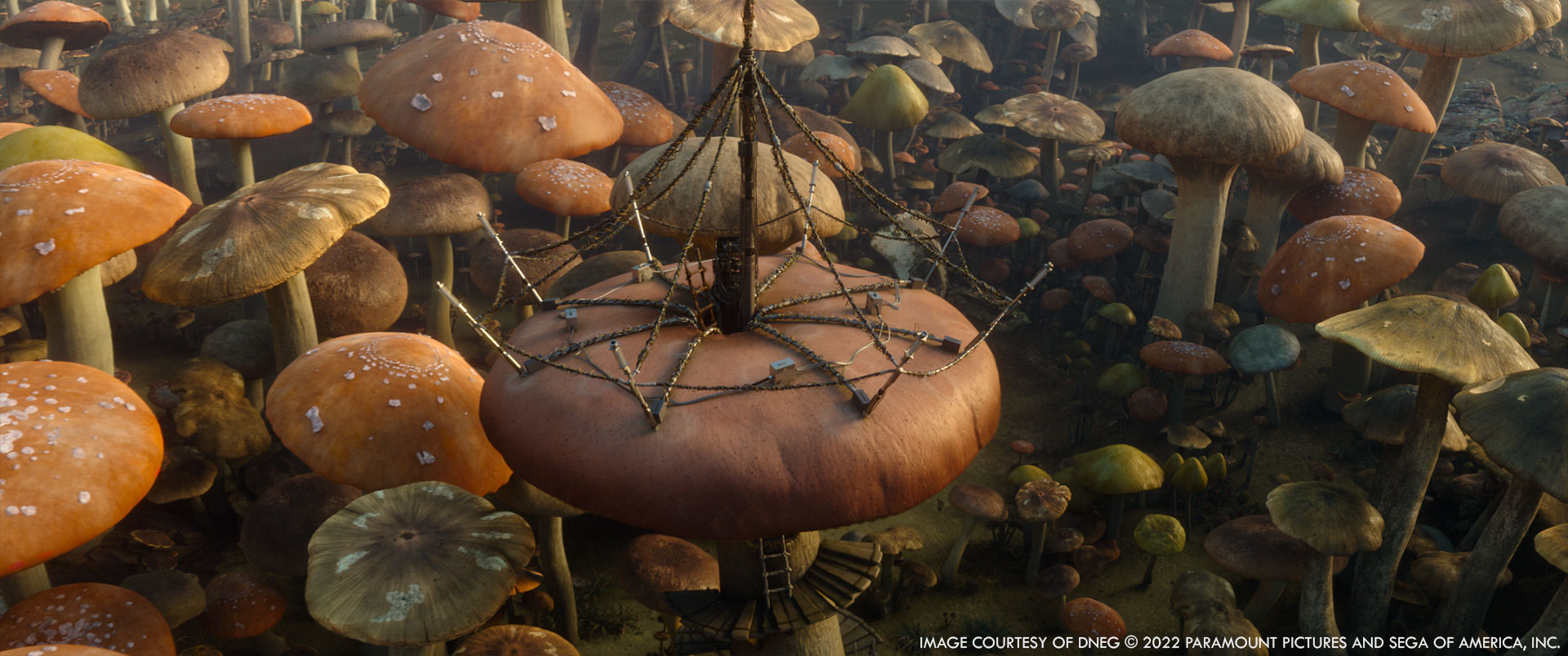
How was split the work between the DNEG offices?
The lead was taken by the DNEG Montreal office. With me was DFX Supervisor Ruth Asensio Jane, CG Supervisor Habeeb Ahmed and Comp Supervisor Benoit Legros. We also had DNEG India involved as well with CG Supervisor Anthony Ignatius Dsouza and Comp Supervisor Sharon David leading the team there. Since it was a very fast paced and a creatively involved show we had to re-think the approach. One thing we learned from doing lots of superhero movies is that we are stronger as one big team rather than many smaller splinter units.
So that was the approach, One Love: One Team with the DNEG family to be able to deliver this kind of creative work.
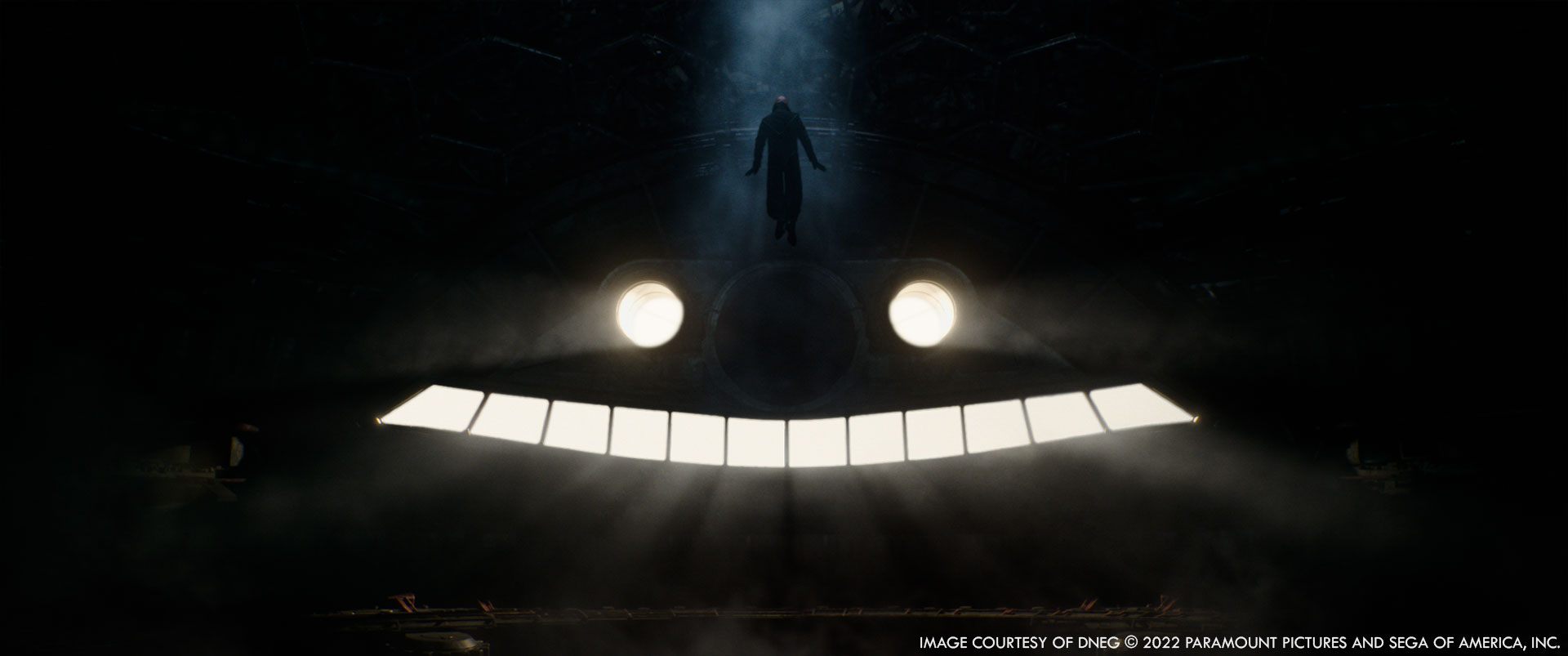
What are the sequences made by DNEG?
We created the mushroom planet when Robotnik drinks his mushroom coffee and plots his crazy ideas, as well as the Mechanical Head Interior for the last battle, when Robotnik dances and uses his emerald energy and lightning to control the robot.
How did you create the inside of the mechanical robot?
Our Environment Supervisor Manmath Matondkar and his team built and assembled the interior beautifully. The main challenge was to orient the world for the audience and give a proper scale to the dome, so we feel that this robot is humongous. Environment Artist David Desplat pulled out all the trickery and did a fantastic job in detailing the interior out from tiny little bolts to different kinds of metal textures, so eventually this interior came to life and felt like a real world construct!
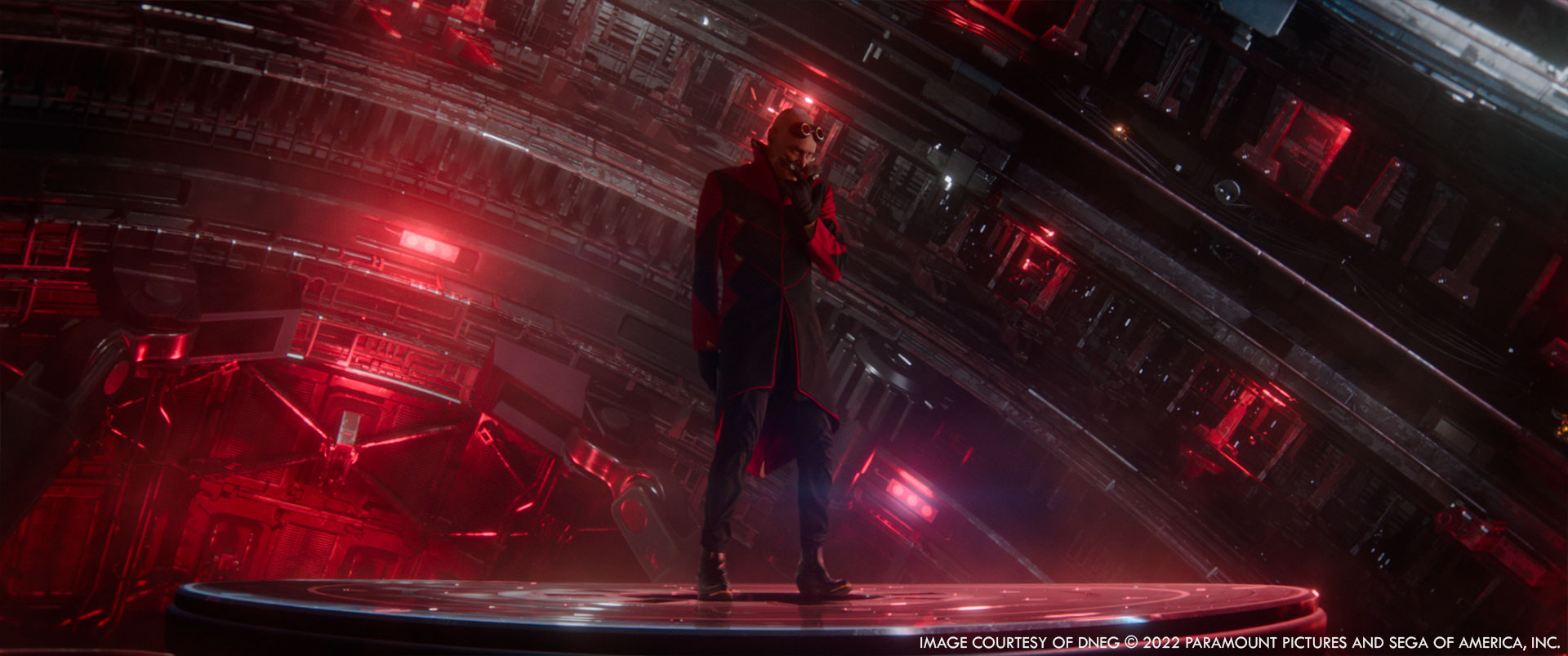
Can you tell us more about the green lightning work?
The lightning work was all about timing! Luckily when they shot Robotnik on set, they had a LED screen with the timing of the lightning so we had all the interactive lightning on Jim Carrey. We just needed the look of the lightning itself so it wasn’t moving too crazy or too insane in terms of frequency and animation. We didn’t want the audience to get too distracted from the main performance, so we had to find the right balance here. We had an FX setup that we could review things fairly quickly so we could put them exactly in place where they needed to be. The compositing department then massaged it in, the challenge with emissive objects, like lightning is it very quickly becomes flat and lacking in depth. So it’s a balancing act to grade the temperature of those lightning bolts, so anything close will give more light than anything further away from the camera.
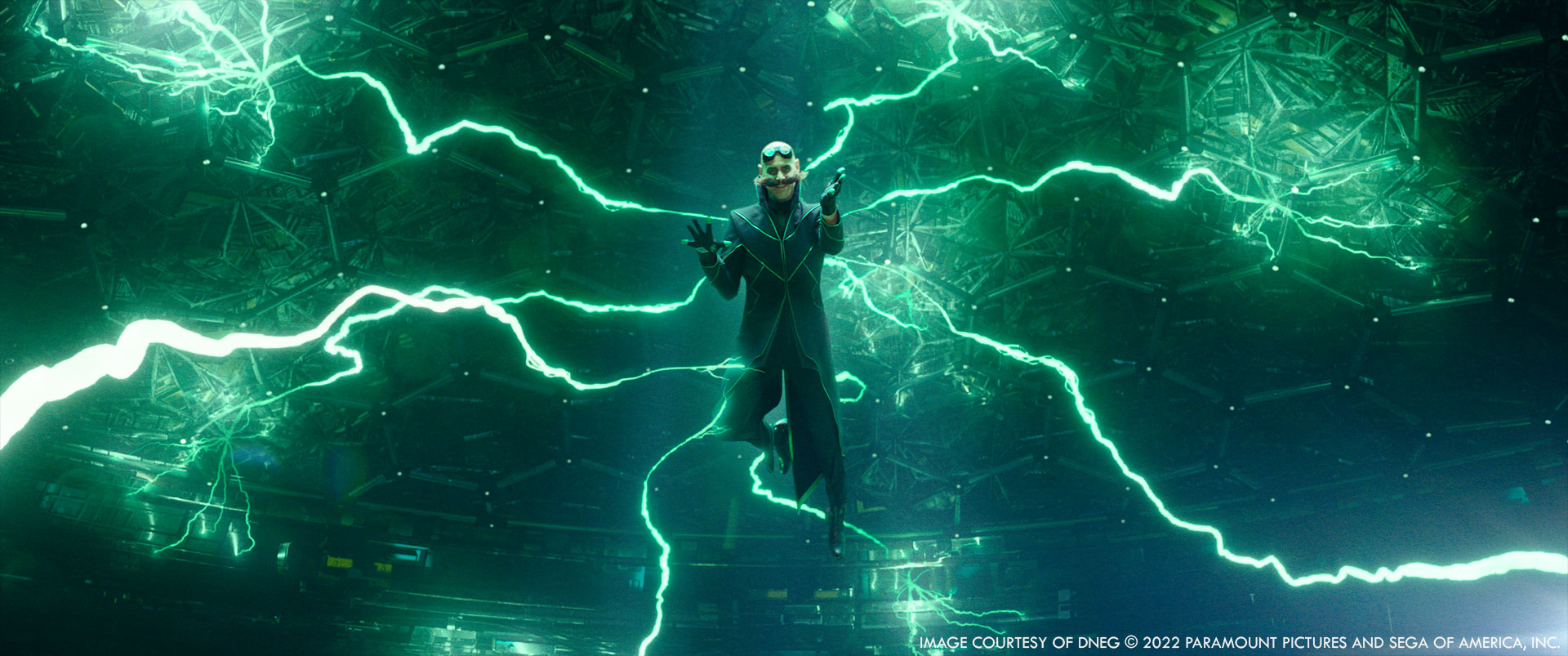
What kind of references and influences did you receive for the Mushroom planet?
We got beautiful concept art from production on how the mushroom planet should look. We also looked at a lot of landscape pictures from real world forests, deserts and rocky terrain to study how this kind of environment reads to the human eye.
Can you elaborate about the creation of this planet?
Well part of the action was shot on set, where Robotnik aka Jim Carrey is interacting with the environment, so we had the first row of mushrooms surrounding that real world set and everything from there we created digitally. It was important that we not just over fill the environment with just mushrooms, but we feel a sense of depth and how big that land is filled with mushrooms. Environment Supervisor Samuel Simanjuntak and his team came up with an idea to have a layered approach. We would first set up the bigger landmarks, like mountains, hills and any really big mushrooms, some of them being 30 feet and higher. Size matters when it comes to mushrooms in that kind of environment. Next we set dressed a second layer of smaller rocks, and a final layer of procedurally scattered mushrooms to fill in the rest. Since all of the shots were meant to work in this one environment, we had to make sure once we had all the cameras, that we made sure we didn’t have any key features blocked as well as any unwanted empty areas which we then addressed in a final clean up pass.
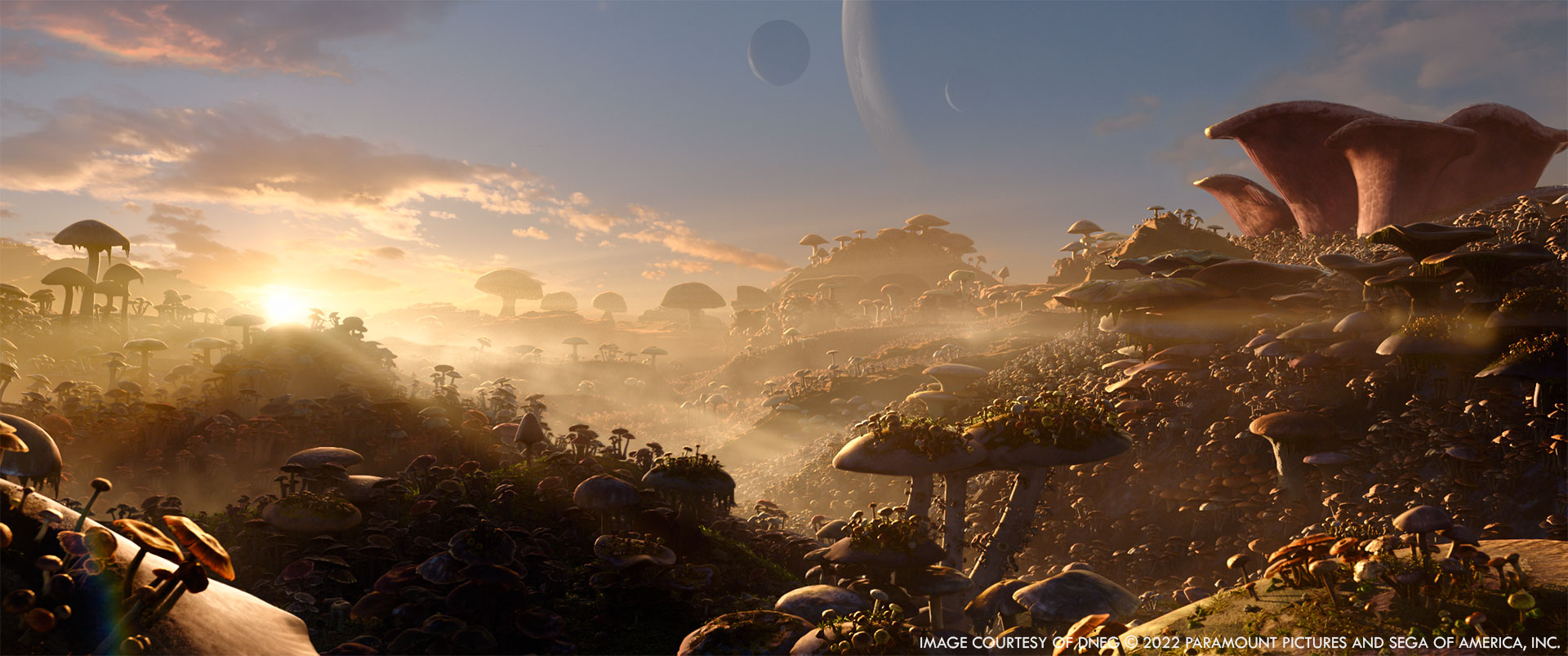
How did you handle the specific lighting look of the planet?
We were bound to the plate for lighting the planet. The idea was that the mood is more dusk, where the sun is going down slowly, essentially capturing the golden hour was key. Lighting Supervisor Aleksandr Saraev and Murtaza Garothwala and their team came up with a beautiful lighting setup to be able to blend the CG lighting with the on set lighting.
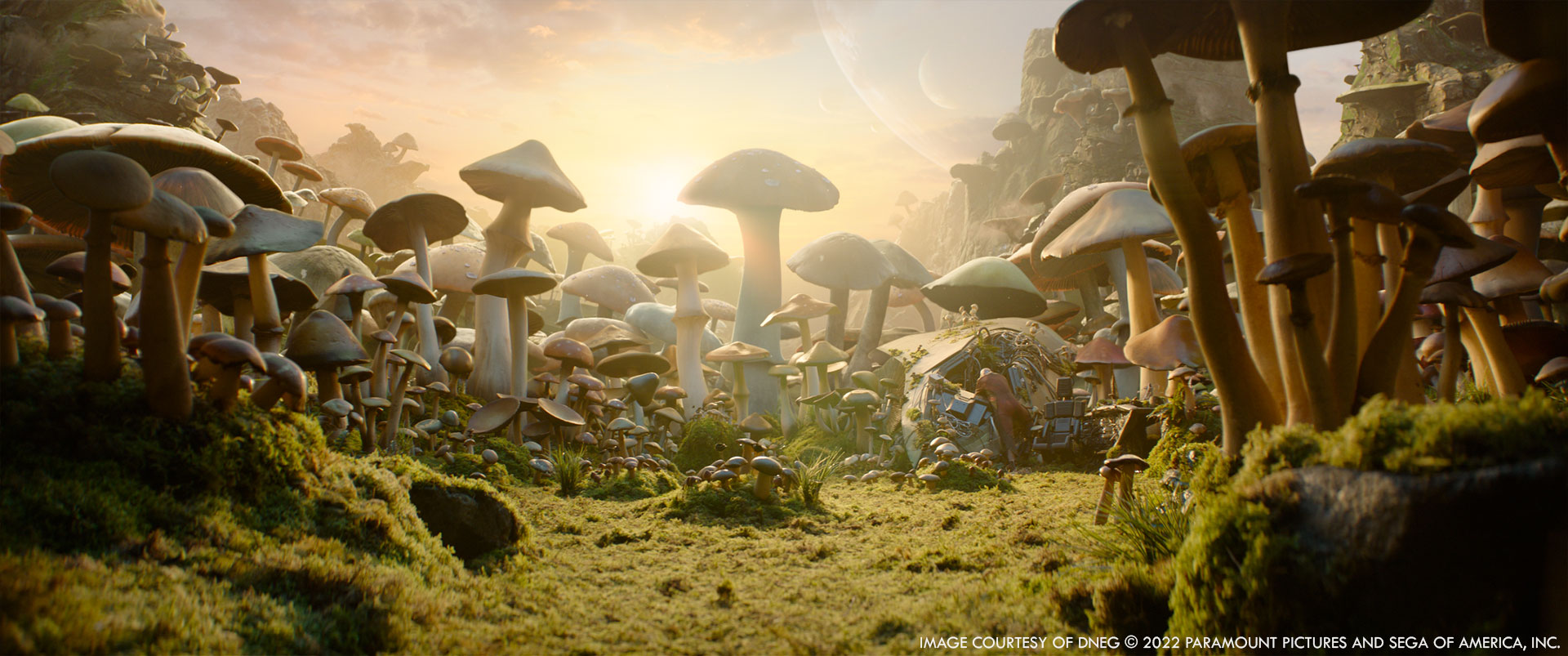
Can you elaborate about the portal creation and animation?
The portal creation and animation look development was done by MPC, we just added a bit of our own flavor to the mix, and created a bit of an environment inside the ring to give it more depth and parallax for our sequence. We did compositing trickery where we layered different renders onto a sphere, to simulate depth and parallax and without the need to render it out in CG for every shot.
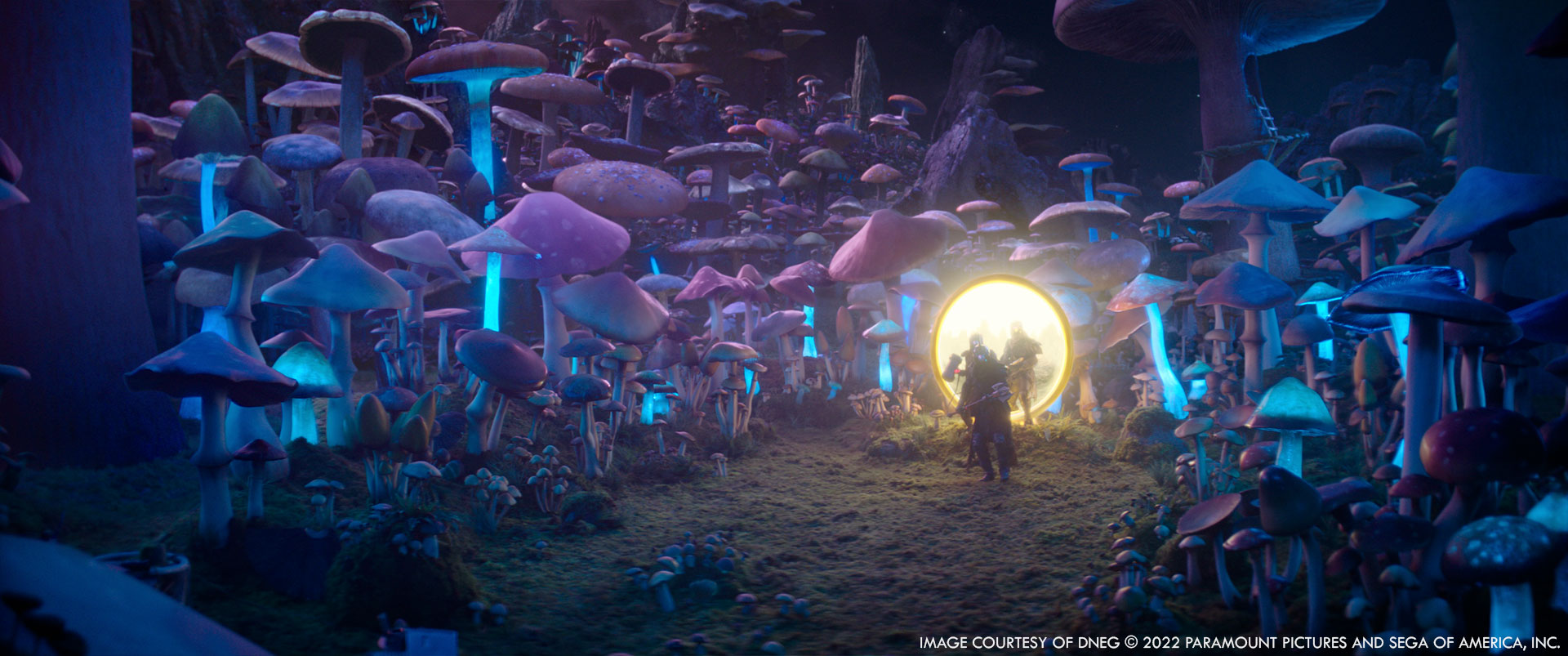
Which shot or sequence was the most challenging?
Both of these 2 environments, the mushroom planet and the mechanical head interior, had their unique challenges for the time we had to work on them, but the team did an outstanding job in bringing it to life.
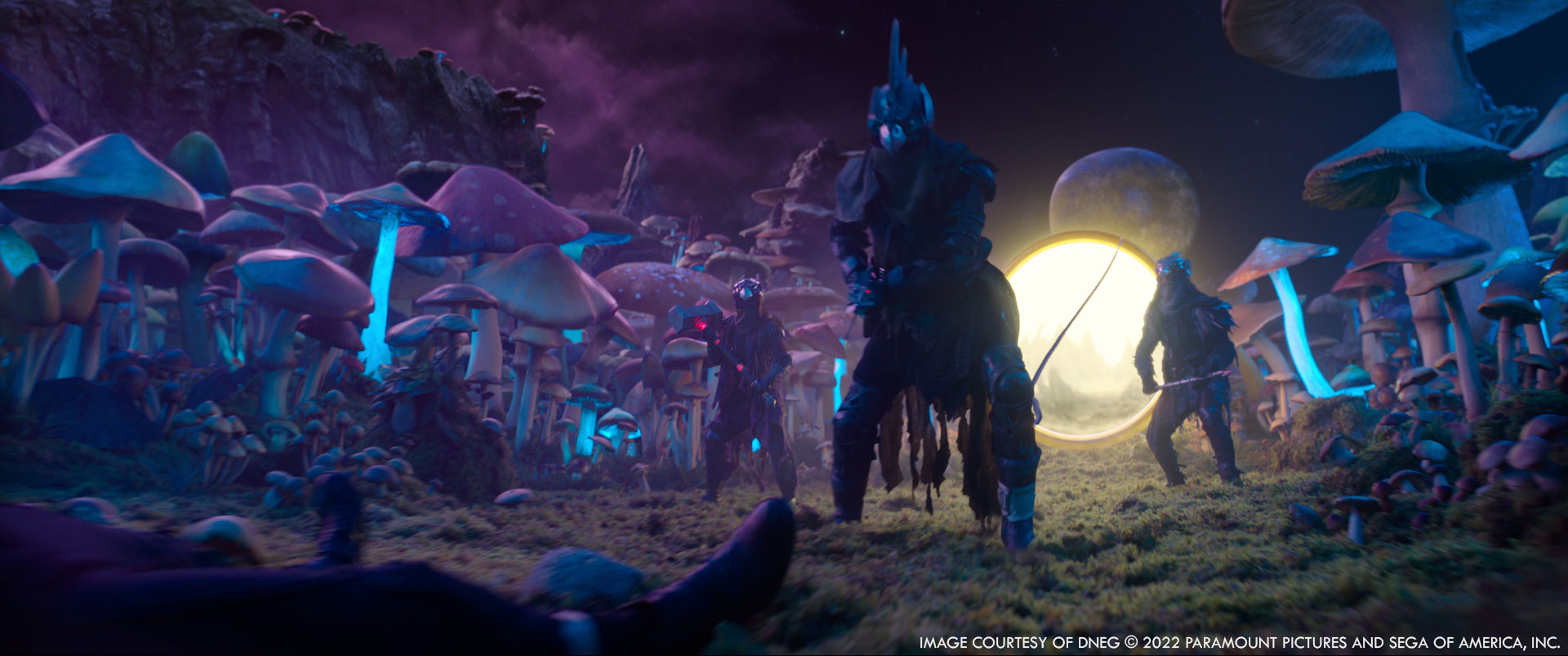
What is your favorite shot or sequence?
Well the whole mushroom planet sequence is fun and surreal with Robotnik doing his thing, a fun way to get into the mood of the movie!
What is your best memory on this show?
When playing with mushrooms and blue, red and yellow furballs, you only have fun and there was lots of laughing in our meetings or dailies.
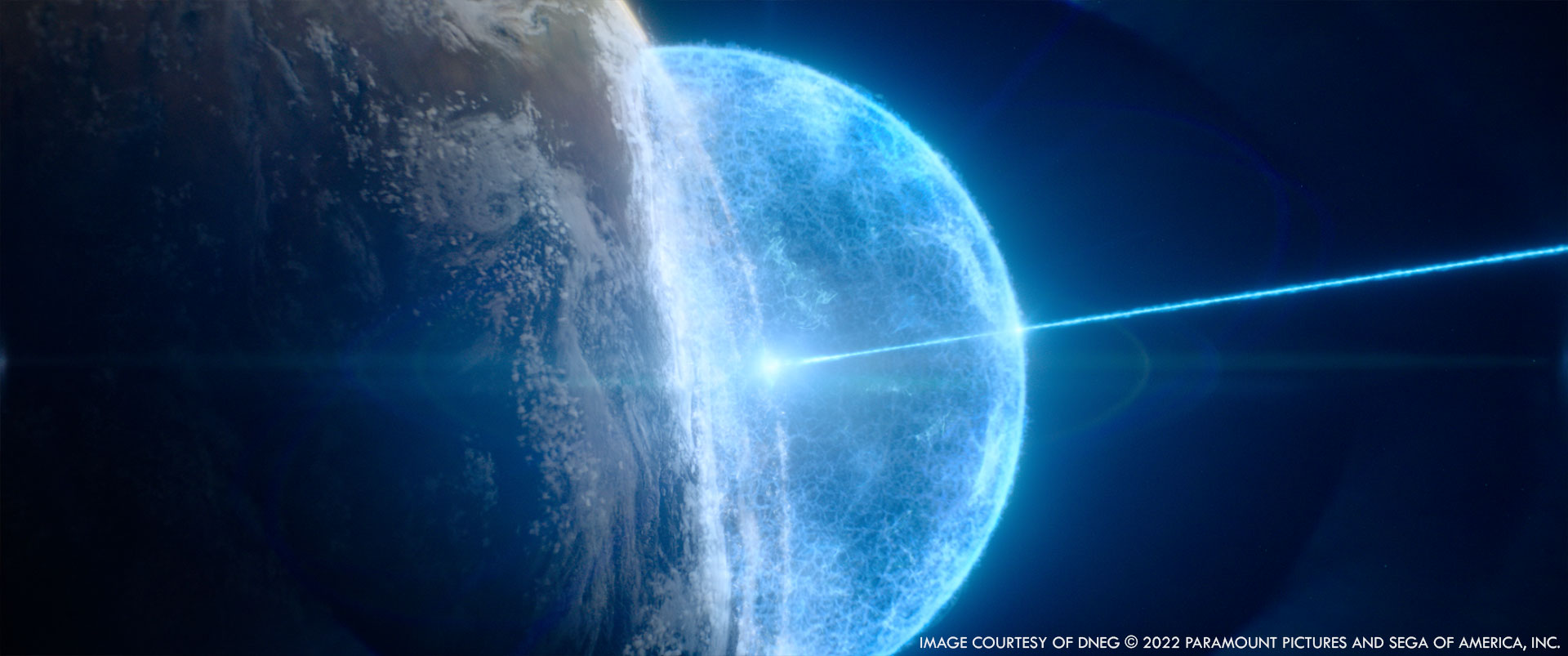
How long have you worked on this show?
Around 6 months.
What’s the VFX shots count?
Around 185 shots.
What was the size of your team?
We had in total 416 artist involved in this show.
What is your next project?
Cooking up something at DNEG … hold on to your pants, excitement will come for sure!
A big thanks for your time.
WANT TO KNOW MORE?
DNEG: Dedicated page about Sonic the Hedgehog 2 on DNEG website.
© Vincent Frei – The Art of VFX – 2022




